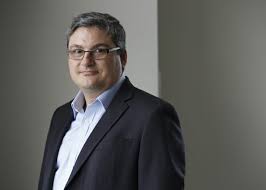Private equity now 18.2% of Future Fund
27 Apr 2020 - Performance

The Future Fund’s allocation to private equity rose more than 1.2% to 18.2% – $29.5 billion – over the first three months of 2020. This was, however, as a result of currency exchange as the $A fell precipitously [against the $US] over the period, chief investment officer, and interim chief executive, Dr Raphael Arndt said.
As a result of selling down infrastructure assets last year, private equity is second only to listed equities among the asset classes in which the Future Fund invests.
Speaking on 27 April, Arndt said the fund had sold down $4 billion of exposure to private equity over the past 12 months and had been selling down a number of illiquid exposures over the past few years, taking advantage of high prices, and with the objective of increasing portfolio flexibility.
“The Future Fund came into the current period of market disruption in a strong position,” he said. “Over recent years we have focused on increasing portfolio flexibility and liquidity and this has included selling or reducing more than 30 individual illiquid positions. Our defensive strategies have performed as expected through the extreme market environment of the last quarter. [He said defensive strategies involved allocations to hedge funds made with the intention of maintaining the value of the portfolio.]
“It is too early to know whether the unprecedented fiscal and monetary policy stimulus by governments around the world will be sufficient to offset the significant impact to global growth due to the COVID-19 pandemic. As a result, while we have participated in several opportunities created by the market disruption over recent weeks, we remain cautious in terms of overall portfolio positioning. In these challenging times, portfolio diversification, flexibility and prudent management of risk remain as important as ever.”
Arndt said maintaining liquidity in the fund meant it would be able to take advantage of investment opportunities that might occur with markets expected to remain unstable over coming months. Looking forward, however, he expected risks to also remain elevated so the fund would be cautious in acting on buying opportunities.
In addition to selling down private equity investments in high price markets over recent years, the fund had sold down some infrastructure investments such as Gatwick Airport and Southern Water in the UK, he said. The infrastructure assets sold down had primarily been selected to ensure the portfolio remained as well-diversified as possible, but the investment team had anticipated that returns from power and utilities businesses could not continue to rise.
“In a quarter where the ASX 200 fell 23.1% and the S&P 500 fell 19.7%, the Future Fund recorded a negative return of 3.4% meaning that for the financial year to date [to March 31] the fund return was -0.2%,” Arndt said.
He noted that illiquid assets had not been marked to market in calculating the quarterly performance data. He said the fund had always marked its illiquid assets to market as at June 30 and would follow this procedure again this year. More frequent valuation had not been necessary because of the fund’s long-term investment horizon.
But he said if private market valuations had been marked down by 7.5%, the fund’s financial year to date return would have been -3.5%.”
The Future Fund stood at $162 billion on 31 March – down from $168 billion on 31 December – and maintained a 10-year return of 9.2%, exceeding the benchmark target of 6.4%.
The Future Fund is yet to appoint a new chief executive after David Neal left at the end of February to lead industry superannuation funds backed global investment firm IFM Investors. The Future Fund commissioned a global search process to find a replacement.
Caption: Future Fund chief investment officer Dr Raphael Arndt.
